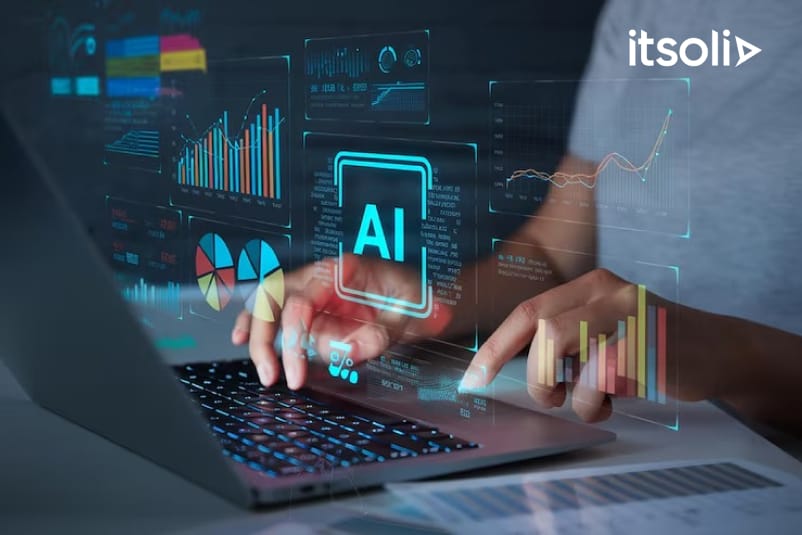
AI-Powered Impact Analysis: Understanding the Ripple Effects Before You Deploy
November 6, 2025
In most enterprises, decision-making lives in silos. A pricing change is considered only from a revenue lens. A marketing push ignores its effect on fulfillment. A feature release is assessed without understanding its impact on churn.
But modern enterprises are no longer static systems. They are complex, interconnected networks where one change affects many variables.
This is where AI-powered impact analysis enters the picture. It gives decision-makers a preview — not just of what could happen, but what else might get affected.
It helps leaders ask better questions:
- If I pull this lever, what are the downstream effects?
- Will this change help one team but hurt another?
- What hidden risk am I missing?
It moves us from isolated projections to systemic thinking powered by data.
What Is AI-Powered Impact Analysis?
At its core, AI-powered impact analysis uses models trained on enterprise data to predict the ripple effects of a proposed action.
It moves beyond “what if” scenarios into what really happens when X changes.
Imagine:
- A retail brand simulating what happens if it offers 15 percent discount in the South region
- A hospital predicting how changing shift schedules will affect patient wait times, not just staff cost
- A SaaS platform seeing how bundling features affects upsell, churn, support tickets, and NPS — not just revenue
This is not traditional forecasting. It is relationship mapping across metrics, functions, and time.
Why Traditional Forecasting Falls Short
Most business forecasting operates on linear assumptions:
- Change price by 10 percent → expect 5 percent drop in demand
- Add two agents → reduce resolution time by 15 percent
But reality is nonlinear. A price change might:
- Increase conversion
- Spike returns
- Upset existing users
- Trigger support escalations
- Affect partner margin
Each of these creates second-order effects — and those are hard to trace manually.
AI models, especially those trained on historical patterns, can learn these nonlinear dependencies and help leaders make better calls.
Key Capabilities of an AI Impact Engine
To support enterprise-grade decisions, your AI impact analysis system should offer:
- Multi-Metric Forecasting
Not just a single KPI. For any proposed change, it should forecast impact across:- Financial metrics
- Operational throughput
- Customer behavior
- Risk indicators
- Team capacity
- Scenario Simulation
Users should be able to adjust variables (price, resource, policy) and simulate:- What changes
- What improves
- What gets worse
- Where the thresholds are
- Causal Inference
It should identify what variables are drivers vs correlates. For example:- Conversion rate drops → is it due to page speed or new copy?
- Churn rises → is it linked to support delays or pricing confusion?
- Real-Time Feedback
When deployed, the system should track actual vs predicted impact:- Did the promotion lift sales as expected?
- Did the staffing change reduce wait times?
- Did the bundling reduce ticket volume?
Enterprise Use Cases
Here is how smart enterprises are using AI impact analysis today:
- Pricing Strategy
An airline can simulate how adjusting fares on certain routes affects:- Load factor
- Revenue per seat
- Competitor response
- Customer loyalty metrics
- Policy Changes
A bank considering a new KYC process can simulate:- Drop-off rates
- Onboarding time
- Compliance exposure
- Ops team workload
- Feature Launches
A product team testing a new AI tool inside a sales platform can assess:- Usage rates
- Ticket volume
- Account manager adoption
- NPS score
- Supply Chain Tweaks
A CPG firm changing packaging size can model:- Shelf placement impact
- Perception shift
- Logistic cost changes
- Stockout frequency
Building Blocks of an Impact Analysis Stack
To make this work at scale, here is what you need:
- Unified Data Layer
You cannot model impact if your data is siloed. Bring together:- Transactions
- Operations
- Customer behavior
- Feedback and tickets
- External factors (market data, seasonality, etc.)
- AI/ML Model Layer
Use a combination of:- Time series forecasting
- Classification models
- Regression
- Bayesian networks
- Reinforcement learning
- Interactive Interface
Allow business users to ask:- What if we increase budget in Q4?
- What if onboarding time rises 20 percent?
- What if we reassign these clients to a new team?
- Governance Layer
All models must be auditable. Capture:- Assumptions used
- Data lineage
- Model explainability
- Bias detection
Strategic Advantages for Enterprises
Firms that embed AI-powered impact analysis into their planning process unlock major advantages:
- Fewer Blind Spots
They do not just optimize for one function. They see tradeoffs across silos. - Better Cross-Functional Alignment
Decisions are made with input from all affected teams, not just one owner. - Faster Decision Cycles
Rather than weeks of spreadsheet modeling, leaders get answers in minutes. - Risk Mitigation
By simulating second-order effects, they reduce the chance of unintended consequences.
Challenges to Expect
No system is perfect. Watch out for:
- Model accuracy: Training data must be clean, unbiased, and recent.
- Interpretability: Business users must understand what the model is saying.
- Over-reliance: AI should aid, not replace, human judgment.
- Change resistance: Some teams may prefer gut instinct. Show results to win trust.
Final Word: From Projections to Foresight
In the age of AI, what separates leaders is not just access to data. It is the ability to anticipate impact before acting.
Firms that master this will move from reactive decision-making to proactive foresight. From fixing issues after they happen to preventing them altogether.
The future belongs to enterprises that simulate widely, plan smartly, and act systemically.

© 2025 ITSoli

